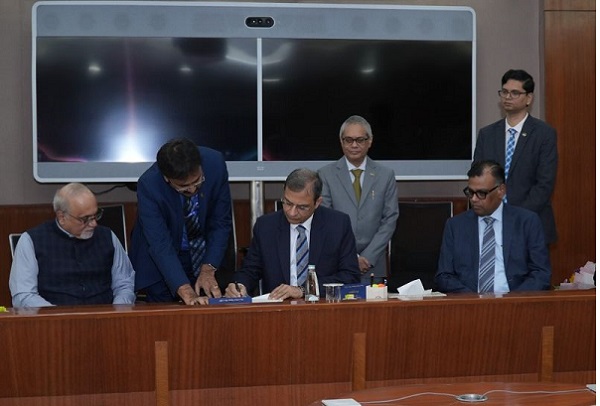.png)
May 2, 2025 at 10:26 AM IST
Goods and services tax collections touched a new milestone in April, rising to ₹2.367 trillion—the highest ever monthly mop-up since the regime was introduced in 2017. This is only the second instance of GST collection have crossed the ₹2-trillion mark, reflecting a strong finish to the previous fiscal year.
Goods and services tax collection in April typically accounts for 9.3-9.5% of the total collections during the year. Going by this, total GST collections in 2025-2026 could range between ₹24.8 and ₹25.5 trillion.
At 12.6%, the year-on-year growth in April collections was also the fastest in 17 months, driven by both base effects and robust activity indicators from March. The increase comes on the back of ₹1.961 trillion collected in March, marking a 20.7% sequential jump.
Within the total, the central GST component rose 10.9% from a year ago to ₹486.34 billion, and state GST collections increased by the same pace to ₹593.72 billion. The integrated GST, which is applied on inter-state transactions, recorded a sharper 15.7% rise to ₹1.153 trillion. The GST compensation cess, which funds shortfalls for states, grew more modestly by 1.4% to ₹134.51 billion.
While the strong April figure officially opens the books for 2025–26, it is closely tied to activity logged in the final weeks of the preceding fiscal year. The number of e-way bills generated in March rose to a record 124.5 million, up 20.2% year-on-year. Since e-way bills are required for transporting goods worth over ₹50,000, they serve as a reliable proxy for taxable turnover and supply chain movement.
This surge in goods movement in March, coinciding with the fiscal year-end, likely contributed to the sharp rise in GST payments filed in April. A cash-based revenue accounting framework means receipts are recorded in the month they are received, which helps explain the divergence between peak e-way bill activity in March and GST reporting in April.
Still, the overall collection trend offers a positive signal for fiscal planners. The Union Budget for 2025–2026 has projected a 10.9% rise in the Centre’s GST revenue, including cess collections, to ₹11.78 trillion. April’s outturn provides early traction toward this target.
Whether the momentum sustains will depend on the pace of formal sector growth, consumption demand, and compliance expansion. Monthly GST figures tend to fluctuate around large institutional settlement dates and fiscal deadlines, and may not always reflect uniform underlying growth. Even so, the consistent rise in both volumes and compliance indicators over the past year adds strength to the April print.
The composition of growth this time, with a sharper jump in inter-state trade collections and relatively muted rise in compensation cess, suggests healthy movement in business-to-business supply chains and lower reliance on backstop funding for states.
For now, GST continues to be a reliable high-frequency barometer for the health of consumption and compliance in India’s formal economy. If the current trajectory holds, 2025–2026 could well see GST emerge as the single largest source of tax revenue for the Centre and states combined.





